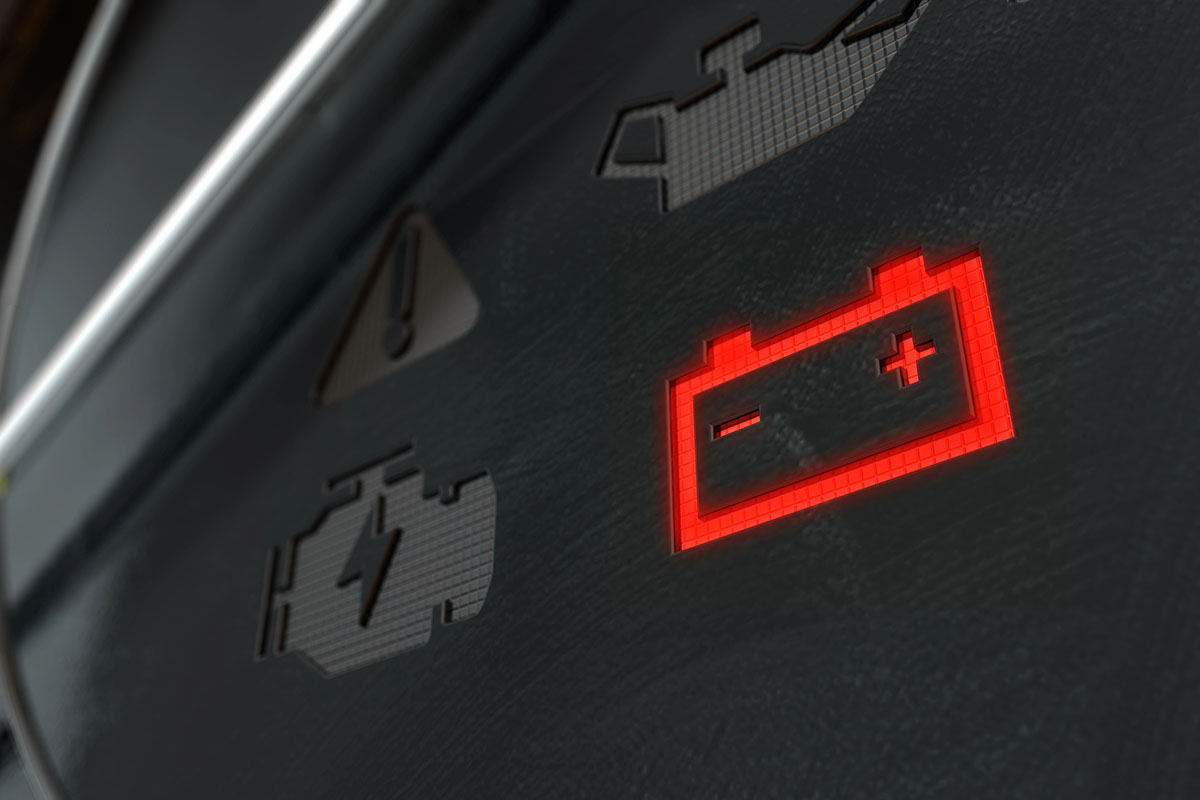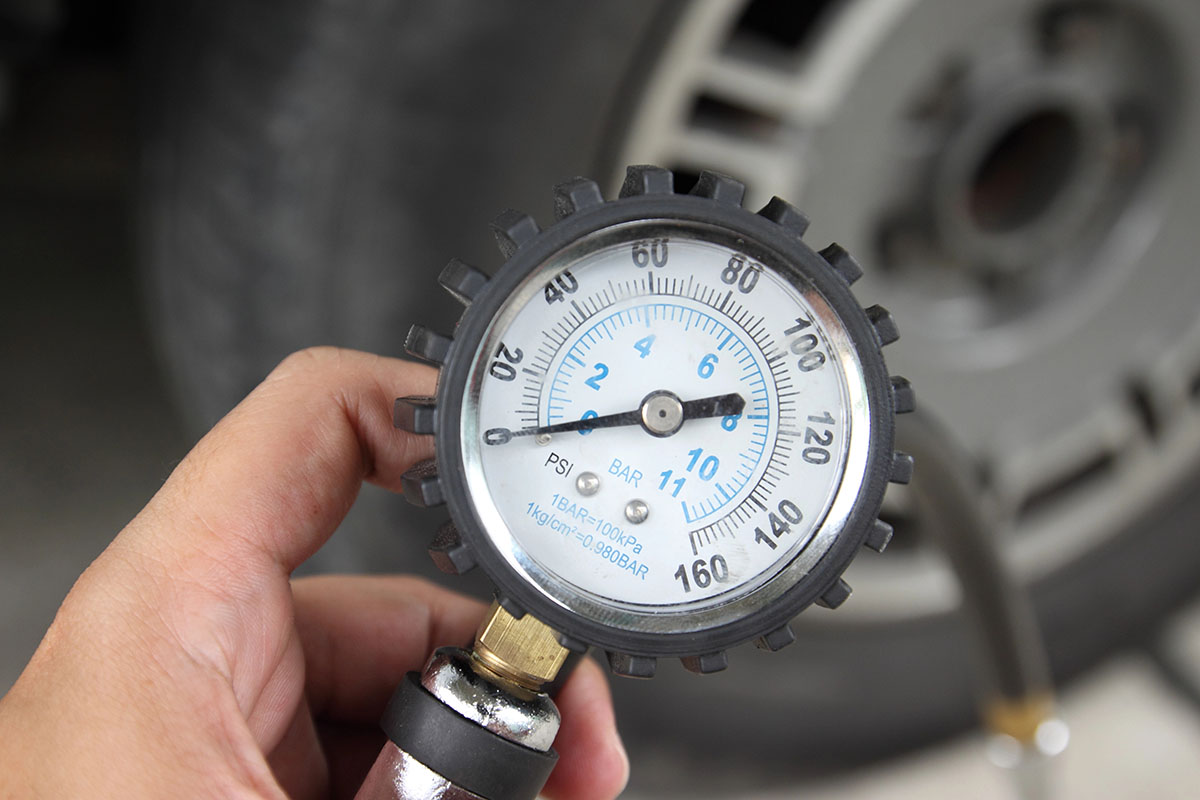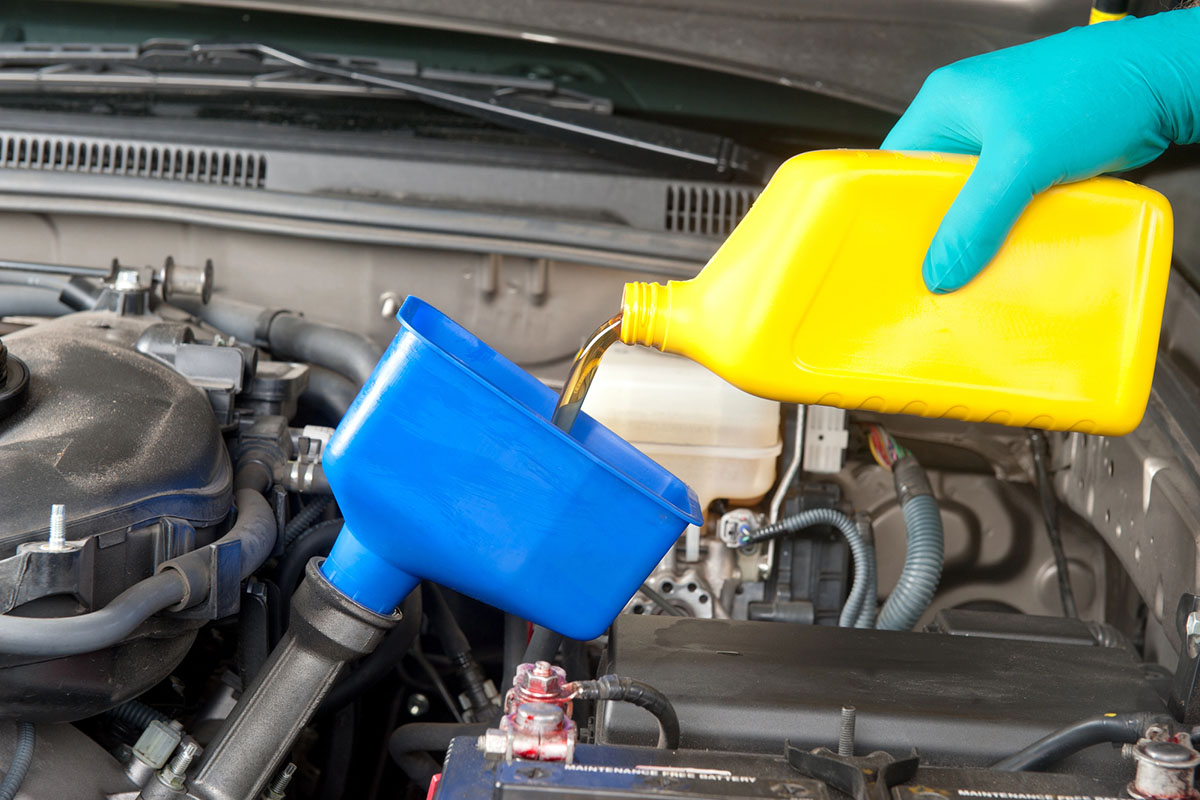The check engine light is an important warning sign on your car’s dashboard that indicates the condition of your engine and emissions systems. When this light comes on, it means that something may be wrong, and you need to get it checked to keep your vehicle running smoothly. It’s essential for every car owner to understand what this light means and how it affects their car’s performance so you can avoid needing to make an unexepected call for roadside assistance in Chandler TX.
Many people have misconceptions about driving with the check engine light on, such as:
- “It’s just a minor issue.”
- “I can ignore it for a while.”
These beliefs can lead to serious problems. Ignoring the light could result in worse fuel efficiency, emissions problems, or even a complete engine breakdown.
We’ll focus on safety concerns and proactive steps you can take to protect both your vehicle and yourself.
Understanding the Check Engine Light
The check engine light serves as an important warning indicator in modern vehicles, alerting you to potential issues within the engine or related systems. This light is part of the onboard diagnostics (OBD) system, which monitors various components to ensure optimal performance and emissions control. When the check engine light activates, it typically means that the engine control unit (ECU) has detected a fault.
Steady vs. Flashing Check Engine Light
Steady Check Engine Light
Indicates a minor issue that requires attention but is generally safe to drive. Common causes include:
- Faulty oxygen sensors
- Loose gas caps
- Minor air/fuel mixture problems
Flashing Check Engine Light
Signals a severe problem, such as an engine misfire. This condition can lead to extensive damage if ignored. Immediate action is necessary:
- Pull over safely
- Turn off the engine
- Call for towing assistance
Understanding these differences helps you gauge the urgency of addressing the check engine light. Ignoring a flashing light may result in catastrophic failures, while a steady light often allows for cautious driving until repairs can be made.
Common Causes for Check Engine Light Activation
The check engine light can turn on for various reasons. Here are some common causes:
1. Faulty Oxygen Sensor
This sensor monitors exhaust gases to ensure optimal fuel efficiency. A malfunction can lead to increased fuel consumption and higher emissions. Ignoring this issue may negatively impact your vehicle’s performance and harm the environment.
2. Loose Gas Cap
Surprisingly, a loose or damaged gas cap is a frequent trigger for the check engine light. It can cause fuel vapors to escape, leading to a vapor leak. This not only affects fuel efficiency but can also result in failing emissions tests.
3. Catalytic Converter Issues
The catalytic converter plays a critical role in reducing harmful emissions. A malfunctioning converter can lead to poor engine performance and increased pollution. Addressing this issue promptly is essential to prevent further damage.
4. Mass Airflow Sensor Problems
This sensor measures the amount of air entering the engine for efficient combustion. A dirty or faulty mass airflow sensor can disrupt the air-fuel mixture, resulting in poor acceleration and reduced fuel economy.
5. Worn Spark Plugs
Spark plugs ignite the air-fuel mixture in the engine. If they become worn out, misfires occur, leading to rough idling and decreased power. Replacing spark plugs according to manufacturer recommendations helps maintain optimal vehicle performance.
Each of these issues not only triggers the check engine light but also poses risks to vehicle safety and efficiency. Taking timely action when faced with a check engine light is crucial for maintaining your vehicle’s health.
Is It Safe to Drive with the Check Engine Light On?
When the check engine light comes on, many drivers wonder, “Is it safe to drive with the engine light on?” If the light is steady, it usually means there’s a minor issue, and you can drive cautiously. If your vehicle seems normal—no strange sounds, loss of power, or overheating—you can take it to a mechanic for a diagnostic check.
However, ignoring the check engine light can lead to serious problems:
- Increased Repairs: Minor issues can turn into major problems if you don’t fix them.
- Safety Hazards: Issues like misfires or overheating can create dangerous situations while driving.
- Environmental Impact: Ignoring emissions-related codes contributes to more harmful pollutants.
It’s important to understand these risks. If your check engine light is flashing, you need to act quickly. This indicates a severe engine misfire that could damage critical parts like the catalytic converter. Make sure to prioritize safety by addressing any warning lights promptly to keep your vehicle running well and safe.
Diagnostic Process for Check Engine Light Issues
Diagnosing the cause of a check engine light (CEL) requires a systematic approach. Mechanics utilize a variety of tools, with the OBD-II scanner being the most common. This device connects to your vehicle’s onboard computer and retrieves crucial information.
Step-by-Step Guide:
Connect the OBD-II Scanner:
- Locate the OBD-II port in your vehicle, usually found under the dashboard near the steering column.
- Plug in the scanner and turn on your ignition without starting the engine.
Read Trouble Codes:
- The scanner will display trouble codes stored in the engine control unit (ECU).
- Each code corresponds to a specific issue or malfunction within the vehicle.
Interpret the Codes:
- Use an online database or reference manual to decode what each trouble code means.
- Understanding these codes is vital for pinpointing the exact problem.
Perform Additional Tests:
- Based on initial findings, mechanics may conduct further tests, such as inspecting sensors or emissions systems.
Reading trouble codes is essential in diagnosing issues accurately. Ignoring this step can lead to misdiagnosis and unnecessary repairs, resulting in additional costs and frustration.
Steps to Take When the Check Engine Light Comes On
When the check engine light turns on, it’s important to act quickly to keep your vehicle in good condition. Here’s what you should do:
Inspect Vehicle for Loose Gas Caps or Overheating Issues
- Check the gas cap: A loose or damaged gas cap can trigger the check engine light. Make sure it is tightened properly.
- Monitor temperature: If your vehicle shows signs of overheating, stop driving immediately. Overheating can lead to severe damage.
Using an OBD-II Scanner for Diagnostics
An OBD-II scanner can provide valuable insights into what’s causing the check engine light to illuminate.
How to use an OBD-II scanner
- Connect the scanner to your vehicle’s OBD-II port, usually located under the dashboard.
- Turn on your ignition without starting the engine.
- Follow the scanner’s prompts to read trouble codes stored in your car’s computer.
Where to get free scans
- Many auto parts stores offer free diagnostic scans. Visiting a local store allows you to identify issues without incurring costs.
When to Get Help from a Mechanic for Check Engine Problems
It’s important to know when to get professional help for your check engine light. Here are some situations where you should consider visiting a mechanic for expert diagnostics and repairs:
- You still have problems even after checking simple things like loose gas caps or overheating.
- The check engine light stays on even though you’ve used an OBD-II scanner and didn’t get any clear answers.
- You’re experiencing other warning signs such as unusual noises or decreased performance, which could mean bigger issues.
Taking care of these problems quickly can stop small issues from turning into major repairs. If you’re unsure, it’s best to prioritize safety and reliability by asking professionals for help.
Driving Cautions with a Check Engine Light On
When the check engine light is on, it’s important to be careful for your safety and the health of your vehicle. Here are some tips for driving safely in this situation:
Things to Avoid While Driving
- Avoid High Speeds: Driving fast can make any existing problems worse and increase the risks.
- Refrain from Heavy Acceleration: Sudden acceleration can put stress on an already troubled engine. It’s better to accelerate gradually to maintain control.
Signs That Mean You Should Stop Driving
- Strange Noises: If you hear knocking sounds or loud exhaust noises, it could indicate serious engine trouble. Find a safe place to pull over and check what’s wrong.
- Severe Loss of Power: If you experience a significant decrease in power or if the vehicle goes into “limp mode,” it means you need to stop driving.
- Overheating: An overheating engine can cause major failures like blown head gaskets. If the temperature gauge goes up, find a safe spot to stop.
- Smoke or Burning Smells: Any smoke or unusual smells should be taken seriously. Turn off the engine and get out of the vehicle immediately.
Preventive Measures and Maintenance Tips to Avoid Check Engine Light Issues
Regular vehicle maintenance plays a crucial role in preventing check engine light (CEL) problems. By staying proactive, you can avoid costly repairs and ensure your vehicle runs smoothly.
Consider the following routine maintenance car tips:
- Check Gas Caps Regularly: A loose or damaged gas cap can lead to fuel vapor leaks, triggering the CEL. Ensuring it’s tight can prevent this issue.
- Replace Spark Plugs According to Manufacturer: Worn-out spark plugs can cause misfires and increase emissions. Regular replacement maintains engine performance.
- Inspect Fluid Levels: Keep an eye on oil, coolant, and transmission fluid levels. Low fluid levels can lead to engine strain and potential damage.
- Monitor Tires: Properly inflated tires improve fuel efficiency and reduce strain on the engine. Check tire pressure regularly.
- Use Quality Fuel: Low-quality fuel can introduce contaminants that harm engine components. Opt for reputable gas stations.
Prioritizing Safety and Maintenance with Your Check Engine Light On
Ignoring your vehicle’s warnings can lead to serious consequences. When faced with a check engine light, consider the following:
- Take Immediate Action: Do not dismiss the alert. A steady light may indicate minor issues, but they can develop into costly problems if left unchecked.
- Seek Professional Help: Visiting a trusted mechanic ensures accurate diagnostics and effective repairs.
- Be Proactive: Regular maintenance is key to preventing future check engine light issues. Simple actions such as:
- Checking gas caps regularly
- Replacing spark plugs on schedule
- Monitoring fluid levels
- Stay Informed: Understand what your check engine light signifies. Familiarize yourself with common causes and symptoms.
Can you drive with a check engine light on? What you need to know is that attention to these alerts is crucial for your vehicle’s health and safety.
FAQs
What does the check engine light indicate?
The check engine light serves as a warning from your vehicle’s onboard diagnostics system, indicating that there is an issue that needs attention. It can signify anything from a loose gas cap to more serious problems with the engine or emissions system.
Is it safe to drive with a steady check engine light on?
While it may be relatively safe to drive with a steady check engine light, it’s important to address the issue as soon as possible. Ignoring the warning can lead to more serious problems and potentially compromise your vehicle’s performance and safety.
What are common causes for the check engine light to activate?
Common causes for the check engine light include faulty oxygen sensors, loose gas caps, malfunctioning catalytic converters, mass airflow sensor issues, and worn spark plugs. Each of these problems can affect vehicle performance and emissions.
How do mechanics diagnose check engine light issues?
Mechanics typically use an OBD-II scanner to read trouble codes from your vehicle’s computer. This diagnostic tool helps pinpoint the exact issue causing the check engine light to illuminate.
What steps should I take when my check engine light comes on?
When your check engine light comes on, first inspect for simple issues like a loose gas cap or overheating. If nothing is apparent, consider using an OBD-II scanner for diagnostics or seek professional help if necessary. If your car is acting off, it’s a good idea to contact a Chandler towing specialist to get your car to a shop for diagnostics while avoiding potential additional damage to your car.
What preventive measures can I take to avoid check engine light issues?
Regular vehicle maintenance is crucial in preventing check engine light problems. Simple tips include checking gas caps regularly, replacing spark plugs according to manufacturer recommendations, and staying on top of routine maintenance tasks. Without proper maintenance, you may find yourself looking for tow trucks in Chandler to have your vehicle taken in for repairs.






